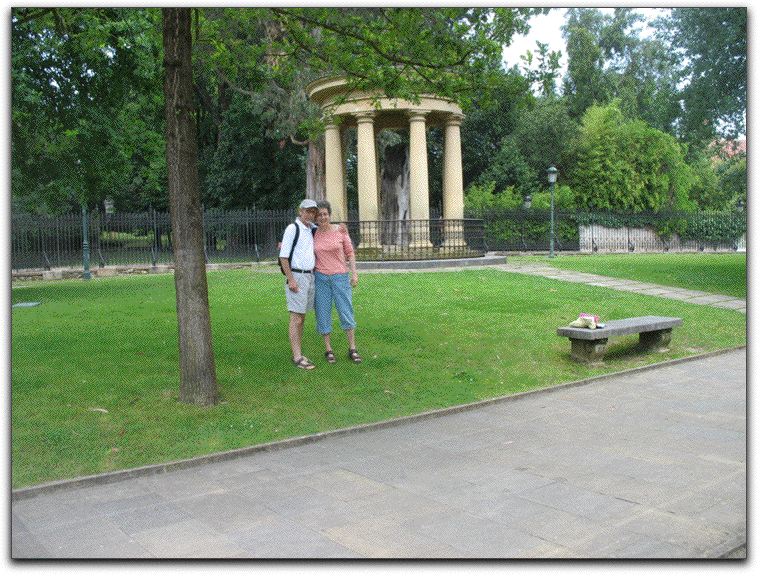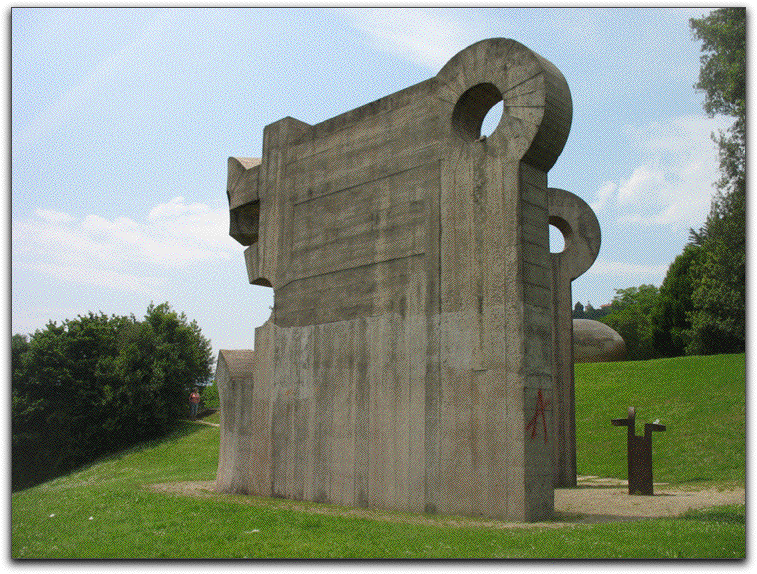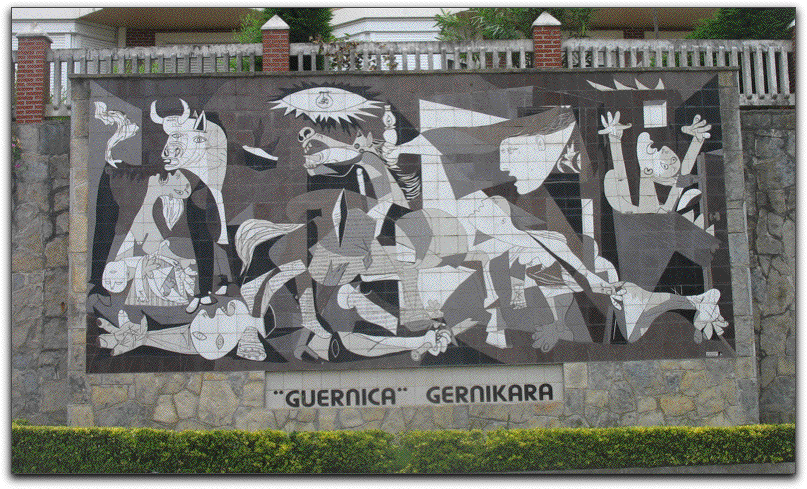
One of the additional themes of our trip is the Spanish Civil War.
Ever since the Weavers sang: “Si mi quieres escribir….” and I learned that my middle name recalls Sammy Levinger, I’ve been more aware than most people of the Spanish Civil War. Even when Tom Lehrer made fun of leftwingers in his song “We Are the Folk Song Army”, I understood that he was still on our side. During my college years I hung a poster-sized picture of Picasso’s painting of Guernica on the wall of my apartment. When Debbie and I first moved to New York City, we saw Picasso’s painting at MOMA (which has now been returned to Spain). However, I never imagined that I’d be in the city itself.
As mentioned in the “Portrait of the Day” Gertrude GPS led us to the city via a two-lane road. We passed a castle at Butroe that seemed to be the site of a “Medieval Faire” that day. Banners crossed the road. Attendants stood around directing traffic for a lot of parking.

excerpt (1st of 6 paragraphs):I asked about a “URL” or a “Web site” or a “WWW” and got blank stares as though I was speaking some foreign tongue. I still hope to find out more about this “Declaration”.The bombing of a civilian population exceeds the logic of war, yet it is not surprising, because war breaks the bounds of all constraints - respect for human dignity. This is the reason why the civilian population has so often been, and still is, the victim of war actions. We cannot remember the 70th anniversary of the bombing of Gernika without recalling the victims of today’s wars and without reflecting on how to avoid those of tomorrow.Included are statements by:
- Todatoshi Akiba; Lord Mayor of Hiroshima
- Tomihisha Taue; Mayor of Nagasaki
- Janusz Marszalek; President of the City of Oswiecim
- Julius Goldstein; Honorary President of the International Committee of Auschwitz
From there it was a few short blocks to the site of the Oak Tree of the Parliament. That’s the old one, now dead, inside the columned structure. A new oak has been planted nearby. When in Bayonne we saw pieces of the old oak in the Basque museum… as though its wood is a holy relic. Along the way to the Oak we passed a number of group tours. Most of the tourists we saw were older Spaniards (Basque?). However, the Info office people told us that 60,000 people visit each year (many of them from Catalonia, the other part of Spain that wants to be independent). There we took the picture that became our portrait for that day.

We walked through a lovely park to a couple of massive sculptures. One by Henry Moore, the other by a Basque artist E. Chillida: “Gure Altaren Etxea”

Yes, that’s Debbie about 10 meters from the sculpture, to give a sense of scale.We took a tea-break and then walked up to the mosaic tile sculpture reproduction of Picasso’s painting before driving on to Donostia (San Sebastian).
